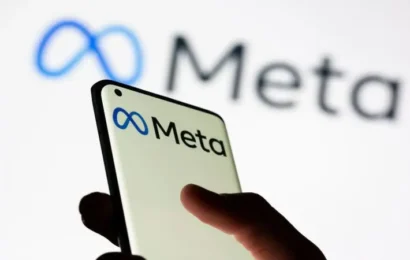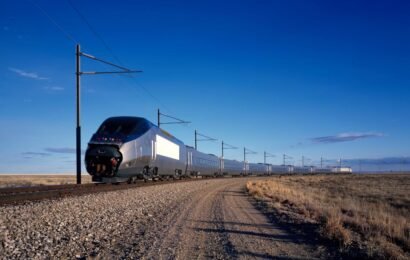In a strategic move that underscores the growing momentum behind clean energy investments in Southeast Asia, Thai billionaire Sarath Ratanavadi has made headlines once again. His flagship company, Gulf Energy Development, has taken full control of the Pak Lay Hydropower Project in Laos, acquiring the remaining 60% stake from Chinese partner Sinohydro (Hong Kong) Holding for $128 million.
This acquisition, executed through Gulf’s wholly owned subsidiary Gulf Hydropower Holdings, elevates the company’s ownership in the 770-megawatt project to 100%, positioning Gulf as a dominant player in the region’s renewable energy landscape.
A Strategic Power Play in the Mekong Region
The Pak Lay Hydropower Project, located along the Mekong River, is one of Laos’ most ambitious energy undertakings. Once operational in 2032, the plant will supply its entire electricity output to Thailand under a 29-year power purchase agreement with the Electricity Generating Authority of Thailand (EGAT).
This long-term contract not only ensures stable revenue for Gulf but also strengthens Thailand’s energy security by tapping into Laos’ abundant hydropower potential. The Mekong River, often referred to as the “battery of Southeast Asia,” has become a focal point for cross-border energy cooperation, and Gulf’s latest move cements its role in shaping that future.
Gulf’s Green Vision: Net Zero by 2050
The acquisition aligns seamlessly with Gulf’s broader sustainability goals. The company has been ramping up investments in renewable energy to reduce its greenhouse gas emissions, aiming to achieve net zero by 2050.
In recent months, Gulf announced a staggering 102 billion baht ($3.2 billion) investment in solar and wind energy projects, totaling 746.6 megawatts in capacity. These initiatives span across Thailand and neighboring countries, reflecting Gulf’s commitment to regional energy transformation.
Additionally, Gulf is developing a liquefied natural gas (LNG) terminal at the Map Ta Phut industrial port in eastern Thailand, further diversifying its energy portfolio and enhancing its ability to meet fluctuating demand with cleaner alternatives.
From Power Producer to Conglomerate: Gulf’s Evolution
Founded in 2007 by Sarath Ratanavadi, Gulf Energy Development has grown from a power producer into one of Thailand’s largest and most diversified conglomerates. Today, its interests span energy, telecommunications, data centers, and digital infrastructure, making it a cornerstone of Thailand’s industrial and technological progress.
Sarath, whose net worth is estimated at $12 billion, has consistently demonstrated a knack for identifying high-impact investments. His leadership has propelled Gulf into the ranks of Asia’s most influential energy companies, with a reputation for bold moves and long-term vision.
The Lao Energy Landscape: Opportunities and Challenges
Laos has long pursued its ambition to become the “Battery of Southeast Asia,” leveraging its mountainous terrain and river systems to generate hydropower for export. The country’s energy strategy hinges on attracting foreign investment to build and operate large-scale projects, with Thailand being its primary customer.
However, hydropower development in Laos is not without controversy. Environmentalists and local communities have raised concerns about the ecological impact of dam construction, particularly on the Mekong River’s biodiversity and downstream livelihoods. Projects like Pak Lay must navigate these sensitivities while delivering on their economic promise.
Gulf’s acquisition of Pak Lay Power signals confidence in Laos’ regulatory framework and its commitment to sustainable development. By taking full ownership, Gulf gains greater control over project execution, environmental compliance, and stakeholder engagement.
Regional Energy Integration: A New Era
The Pak Lay deal also reflects a broader trend toward regional energy integration in Southeast Asia. As countries seek to decarbonize their economies, cross-border electricity trade is emerging as a viable solution. Hydropower from Laos, solar from Vietnam, and wind from the Philippines can complement each other to create a resilient and diversified energy grid.
Thailand, with its robust transmission infrastructure and growing demand, is well-positioned to serve as a hub for regional energy exchange. Gulf’s investments in Laos and other neighboring countries are laying the groundwork for this interconnected future.
Financial Implications and Strategic Gains
From a financial standpoint, the $128 million acquisition is a calculated bet. By consolidating ownership, Gulf eliminates the complexities of joint venture governance and streamlines decision-making. It also gains full access to future cash flows, enhancing its return on investment.
Moreover, the deal strengthens Gulf’s asset base, which is crucial as the company continues to expand its footprint in capital-intensive sectors like LNG and digital infrastructure. Investors are likely to view the move as a sign of Gulf’s confidence in its long-term strategy and its ability to manage large-scale projects across borders.
Sarath Ratanavadi: Visionary Leadership in Action
Sarath’s rise to prominence is a testament to visionary leadership and strategic foresight. A graduate of the University of Southern California, he began his career in engineering before venturing into energy development. His ability to blend technical expertise with business acumen has earned him accolades across Asia.
Under his stewardship, Gulf has not only grown in size but also in influence. The company’s partnerships with global players, including those in telecommunications and data services, reflect Sarath’s belief in convergence—where energy, technology, and infrastructure intersect to create new value.
Looking Ahead: What’s Next for Gulf?
With the Pak Lay acquisition complete, Gulf is expected to accelerate construction activities to meet the 2032 operational target. The company will likely engage international contractors and consultants to ensure best-in-class engineering and environmental standards.
Beyond Pak Lay, Gulf’s pipeline includes additional hydropower projects in Laos, solar farms in Vietnam, and digital infrastructure ventures in Thailand. The company is also exploring opportunities in green hydrogen, a frontier technology that could redefine energy systems in the coming decades.
As Gulf continues to diversify, its role in shaping Southeast Asia’s energy future becomes increasingly pivotal. The Pak Lay deal is not just a transaction—it’s a statement of intent.
Conclusion: A Defining Moment for Southeast Asian Energy
Gulf Energy Development’s full acquisition of the Pak Lay Hydropower Project marks a defining moment in Southeast Asia’s energy transition. It reflects the convergence of economic ambition, environmental responsibility, and regional cooperation.
For Sarath Ratanavadi, it’s another milestone in a career built on bold decisions and transformative impact. For Thailand and Laos, it’s a step toward a cleaner, more connected energy future.















